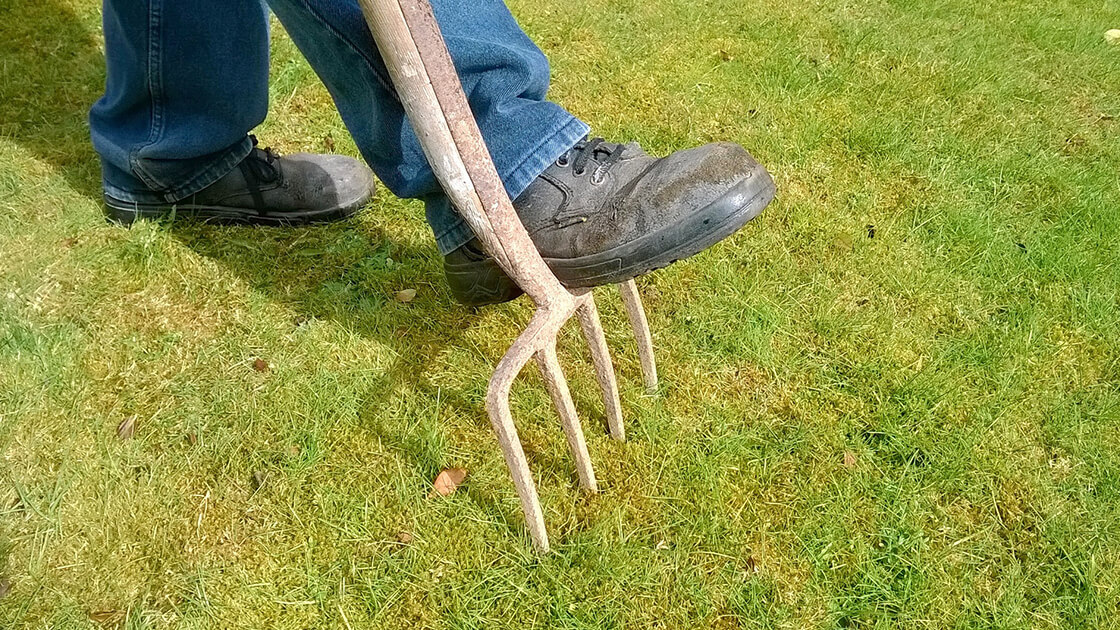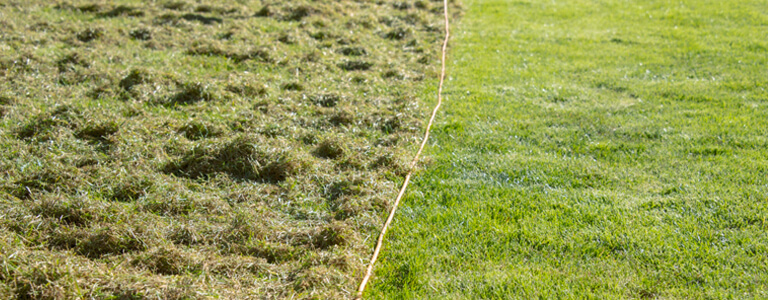
Although there can be several reasons for a patchy lawn, one of the biggest offenders can be soil compaction.
Soil compacting is precisely that – flattened soil with little air flowing between it.
The poor airflow often offers little oxygen to your lawn. This means nutrients and water will struggle to meet the soil, ultimately preventing it from properly getting to your turf. The lack of nutrients and water will eventually cause your grassroots to remain shallow and won’t grow deeper.
If this goes for a long time, your grass can dry out and slowly die. So, to maintain a stunning lawn, you must aerate it.
As one of Sydney’s leading providers in turf supplies, we understand the process of aeration and can explain the different ways available to do it. To find out more about lawn aeration, keep reading below.
Different types of lawn aeration
When it comes to aerating your lawn, there are two types of methods – spike aerators and plug aerators.
Spike aerators simply force holes into the soil. This leaves divots and holes in the ground for air to circulate.
Meanwhile, plug aerators remove plugs of soil and grass from the ground. This is considered the most effective method because instead of forcing holes in the ground, it hollows out chunks of the grass and soil through its plugs.

Manual aeration
Many tools can be used for manual aeration, which is often considered a traditional process. However, this method is best suited for smaller areas of grass only due to the manpower it requires.
The most traditional option is a handheld aerator. Much like a pitchfork, spikes are stabbed into the grass, leaving plugs or holes in the ground.
Alternatively, aerator shoes can be worn to do this. It generally works in the same manner, except instead of a fork in the ground, you are stepping with the spikes at the bottom of the feet.
Manual drum aerators are another popular method that can be used. This technique works by rolling a drum with spikes around it and pushing the device into your lawn.
Both spike and plug aerators can be used in this method.
Automatic aeration
Although there are several manual aerating tools and techniques, there are other few powered tools that can help you with this activity. Not only does it make the job easier, but it cuts your work time as well.
There are a few options you can rely on. This includes gas-powered aerators and pull-behind aerators.
Gas-powered aerators work like a lawnmower, but instead of cutting, spikes are used to create holes in the ground.
Pull-behind aerators are drums that can be pulled behind a riding lawnmower, making it an automatic process.
Both make an excellent choice for large properties.
After aerating
After you aerate your lawn in your selected method, it is recommended you fertilise your lawn or at least apply a compost top dressing. This will allow the dressing or fertiliser to reach the roots efficiently.
On top of this, this is the best time for you to reseed any bare patches you find. After aerating, you can mow and water your grass as usual.
Need more information? Check out the rest of our blogs discussing other handy lawn tips.
Need new grass? Let J&B Buffalo Turf Supplies help! Specialising in turf, we can provide you with a quality lawn you can love and adore for years to come.
Selling national favourites including Sir Walter, Sir Grange, TifTuf and more, we will have the turf variety you desire.
Buy online or contact our team by calling 1800 668 786.



